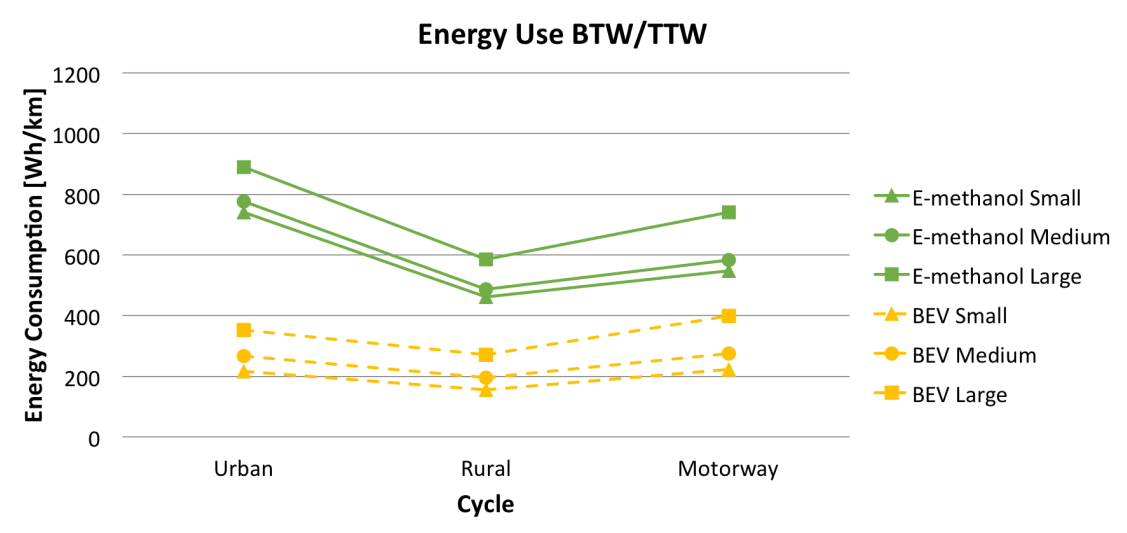Quote:
Originally Posted by aerohead

Page 26
4. Results
' The small BEV's efficiency is noticeably lower in the city cycle than the medium sized but responds predictably in the other the other two cycles in line with the larger cars. This rather strange behavior is connected to the regenerative braking which is dependent on available wheel power and mass.'
--------------------------------------------------------------------------------------
1) @ low velocity ( low aerodynamic drag ) , in an urban driving environment ( stop and go ) the 'medium' BEV has a 'regenerative' energy harvesting efficiency advantage over the less-massive 'small' BEV.
2) I'm not recommending the larger weight class vehicle, I'm simply pointing out the 'inertial' advantage of the 'medium' sized BEV.
3) I'm talking about the dynamics of a specific vehicle.
4) The 'small' BEV's efficiency ( its overall efficiency, including all other dynamic considerations ) benefits from a greater mass, and the context has to do with regeneration
5) That's all I ever said or implied.
6) All of your apologies are accepted.
|
You have argued in the past:

You contradicted oilpan4's (correct) assertion that a lighter Model 3 would be more efficient. This paper does not support that contradiction. It clearly shows that the heavier the car is, the more energy it uses per mile regardless of the effects of regenerative braking:

You seem to be confusing efficiency of the movement of energy from battery to wheels with efficiency of energy per distance traveled.
They are two different things.